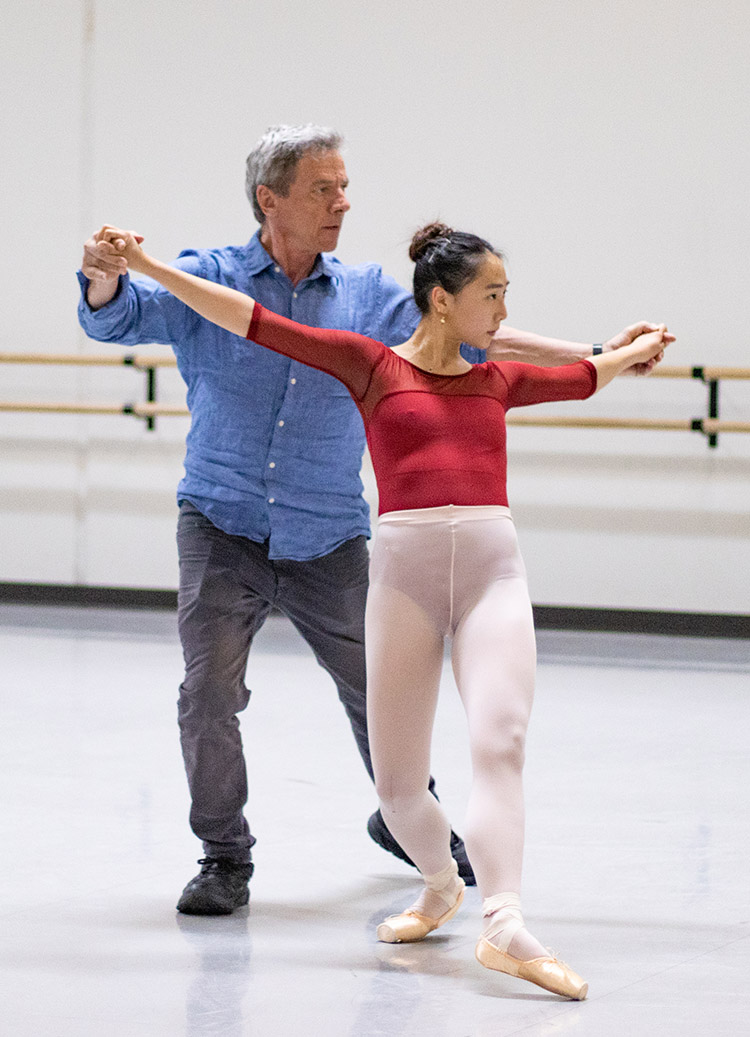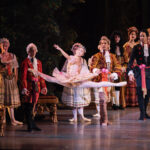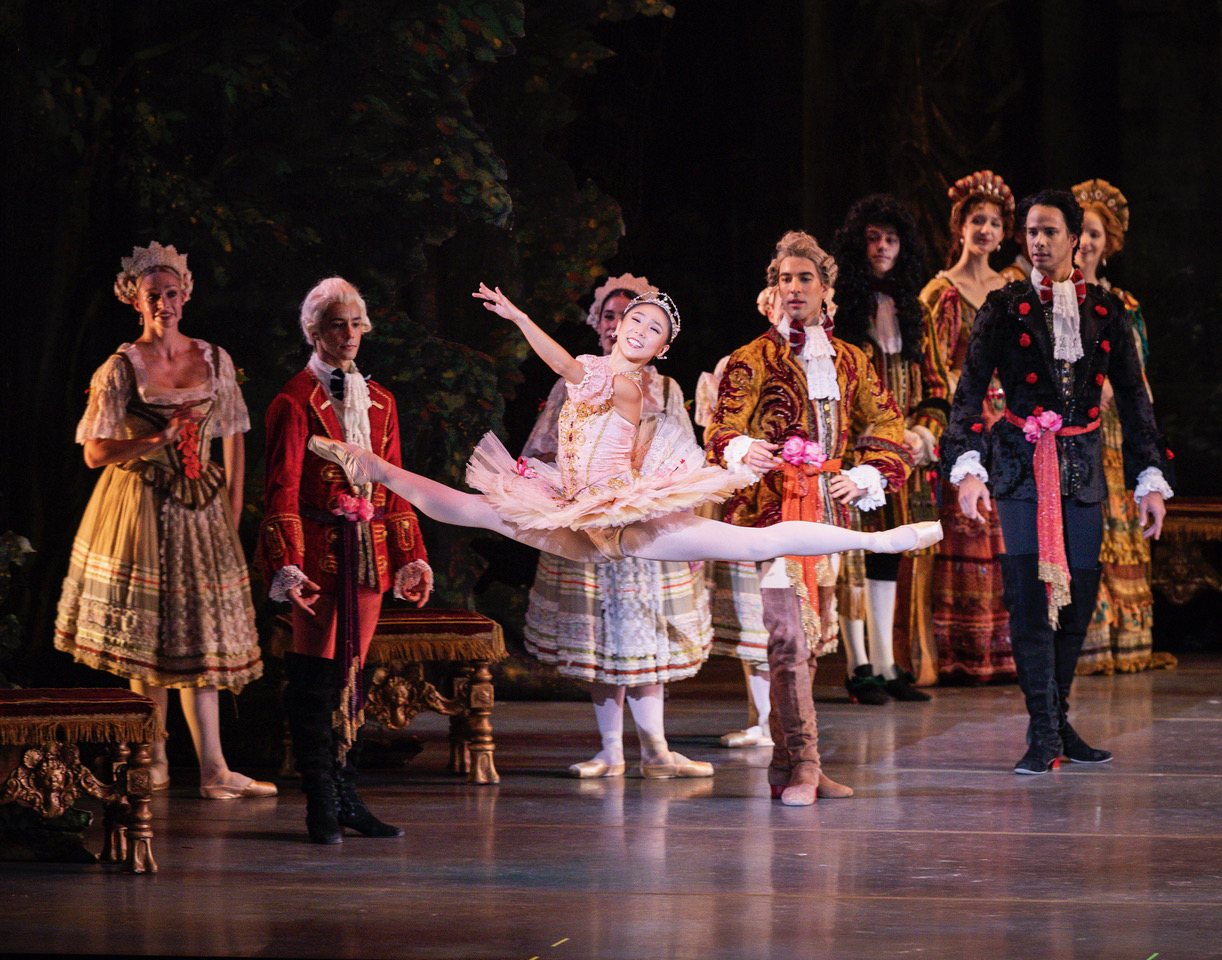
Tell us about All Balanchine !
Well first, this production will have live music, played by The Phoenix Symphony. I mean truly, it makes all the difference for the dancers, for the audience, and for me… live music makes a performance feel whole. Balanchine’s works show the impact of live music and dance together. Each one brings the other to life.
It is always a delight to work on Balanchine ballets. This year’s selections, Raymonda Variations, Emeralds, and The Four Temperaments, are all a celebration of their music. I want the audience to experience that connection because it is so powerful.
Why these three ballets?
Raymonda Variations is new for the company. Balanchine always loved the composer, Alexander Glazanouv, and this score especially. It is so well balanced between grandeur and playful. The choreography is a reimagination of Marius Petipa’s original ballet. It is Petipa variations, but Balanchine’s way, which means it is much more complicated and technically demanding for the dancers. I love that it is a real challenge.
Emeralds is interesting. When the complete Jewels ballet premiered, all of the dancers thought Emeralds was beyond incredible, but the audience liked it the least. I think of it as a ballet with a lot of perfume. Gabriel Faure’s music and Balanchine’s choreography together have a unique lushness, layered with different textures. It is very seducing and touches you in such a way that cannot be put into words. Without a doubt, Emeralds is the definition of a dancer’s ballet.
Four Temperaments is one of Balanchine’s strongest works. There is so much depth to this ballet, between the medieval historic context, the choreography, and Paul Hindemith’s score. All of the elements are very specific and very abstract at the same time. For the dancer, you must be musical and connected with your body to execute everything, but still keep your imagination open. If you can convey what the music is saying through your body, you are already halfway there… but not everyone has that ability.
I always say mixed repertoire programs are like creating a menu. You have to have the right ingredients, the right balance, or else you are left unsatisfied. These three ballets, in my opinion, are every bit as satisfying as your favorite meal.
What makes Balanchine’s works so special?
The man was a genius. There is no one like him and there probably never will be again. It is funny because I think Balanchine would be surprised by the longevity of his ballets. He was never thinking about what would happen after he was gone. But for every year he lived, he did something extraordinary. It is very rare to be able to say that about most choreographers and there is no one who has created so many masterpieces. In that sense, I feel very lucky to have been around him.
Balanchine was really after seeing the dancer, their person. He believed each dancer had to be honest with themselves and do whatever they could with a role. I think that is why dancers love doing his ballets. There is a freedom to his choreography and of course, it feels like it was meant to be on your body.






